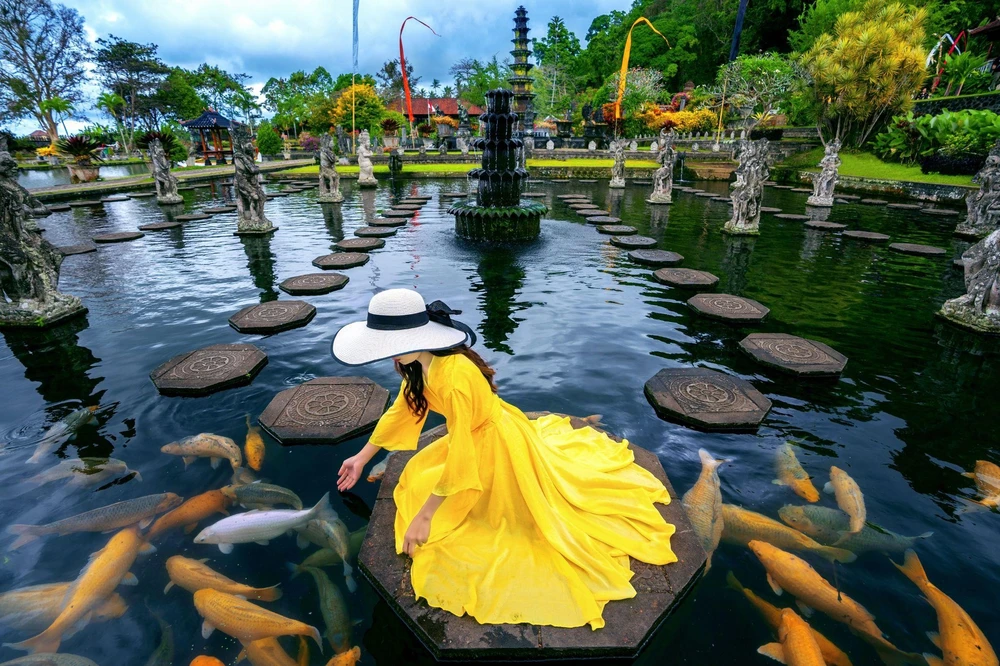Many people who get fish for the first time feed them too much. Many foods can clog your filter and turn into toxins that are bad for your fish when you give them too much of it. Because fish don’t like to be overfed, there are warnings on fish food packages not to do that.
How often should you feed your fish?
Fish eat when they are hungry, and there is food around. For more food, they will eat a lot more often. However, if there aren’t many food sources, they might not eat for weeks. On the other hand, fish are very resourceful and will eat when they get the chance.
That means that if you give them food, they will eat it even if they aren’t hungry. Whenever your fish “beg” for food, think about that. Fish will figure out who brings the food to the tank in a few days. They will jump at the chance to be fed, even if they don’t need food.
How many times a day do fish require feeding?
How often you require to feed your fish relies on the type of fish in your home. When most fish are fed once a day, they do very well. However, some fish owners prefer to feed their fish twice a day, feeding them twice a day. Some young fish might need to eat three or more times a day. However, of how you feed your dog multiple times, the most important thing is to keep each feeding small.
Most fish can live on two meals a day. Except for nocturnal feeders, the time isn’t significant. It would help if you fed your nocturnal fish, like some catfish, before turning off the lights at night. Use their mind of smell to locate food in the dark. It’s not always true that you should feed your dog once a day, but some exceptions are.
Herbivores (fish that eat plants) like Silver Dollars, Mollies, and Farowellas have small stomachs that can’t hold much food. They need to eat often because they can’t store a lot of food. In the wild, they would eat plants all day. They should be fed several times a day or given live plants they can eat.
Goldfish don’t have a stomach at all, so they shouldn’t be provided a big meal all at once. They eat algae and other food all day, so it’s better to feed them several small meals daily instead of giving them one big meal a day. Newly hatched fry and young fish who aren’t yet fully grown need to be fed more often. They need special foods for fry.
How do I understand if I’m feeding my fish enough?
In general, please don’t give your fish more food than they can eat in less than five minutes. When you’re not sure what to do, don’t feed. You can always give them another small meal if they need it. Keep in mind that the type of food you eat is just as important as how much.
If you want your fish to stay healthy, you need to ensure they get the right food. Also, if you have a lot of fish, you’ll need to think about what each species needs to stay healthy and find food that will meet those needs. People who keep fish might need to give them more food if they have skinny bodies, have sunken bellies, show pale colors, or die off one by one.
The fish with parasites or worms in its body will also offer these signs as a reminder. Antiparasitic or deworming medicine may be needed if your fish are getting a lot of food but not gaining weight. This is because they may have parasites that are getting in the way of them getting bigger and bigger.
Add a little food at a time rather than all at once
This is how most in-tank filters usually return water to the tank. This should make water flow across the tank (and often weakly back again toward the filter as the flow deflects off the opposite side). The food you add should stay in the water for a short time as it sinks. Filters inside a tank usually do the same thing as external filters, but they can be a lot more flexible.
You can move the return pipe or spray bar so that the water goes straight down to the tank floor and quickly washes down any food. Some tanks have filters in the hood and work by gravity; the water flows through them and back into the tank. These filters can also make a lot of water flow down.
If your filter is pushing water down, it might be a good idea to turn the filter off while you feed your fish. These things are mixed in one package, so some fish food floats and others sink quickly and slowly. The way this is supposed to work, most types of fish should have the chance to feed. It could also be an excellent concept to provide the fish in fewer amounts to consume most of the food before it drops to the bottom.
Read more here




